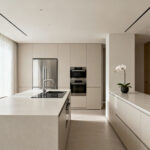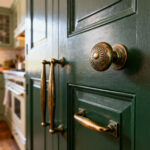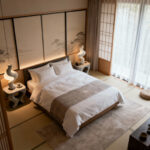Imagine stepping into your living room, where the perfect light transforms the space into a personal sanctuary. The right living room light bulbs can elevate a sterile environment into a warm, inviting atmosphere that beckons you to unwind. But in today’s market, how do you navigate the sea of options to find the ideal illumination for your space?
From the flickering flames of ancient oil lamps to the cutting-edge technology of today, our journey of home lighting has been nothing short of revolutionary. We now stand at a crossroads where LED, incandescent and fluorescent bulbs vie for our attention, each offering its unique blend of warmth, efficiency, and ambiance – much like the diverse elements in a well-balanced ecosystem.
As we explore the world of living room light bulbs, we’ll unravel the intricate dance between form and function, energy efficiency, and aesthetic appeal. Whether you’re looking to create a cozy reading nook, a vibrant entertainment space, or simply how to choose a living room light fixture that complements your decor, this guide will illuminate the path to making informed choices that align with both your style and sustainability goals.

Join me as we shed light on the nuances of each bulb type, demystify color temperature, and calculate the long-term impact of our lighting decisions. By the end of this journey, you’ll be equipped to transform your living room into a harmonious blend of comfort, style, and eco-consciousness – one bulb at a time.
Key Takeaways
Before we dive deeper, let’s highlight some key points that will guide our exploration:
- Versatility is Key: Different bulb types excel in various aspects of lighting. LEDs offer energy efficiency and longevity, incandescents provide a warm, traditional glow, and fluorescents bring brightness to larger spaces.
- Energy Efficiency Matters: Opting for energy-efficient bulbs like LEDs can significantly reduce your carbon footprint and save on electricity bills over time.
- Longevity Leads to Savings: Consider the lifespan of bulbs when making your choice. Longer-lasting options may have a higher upfront cost but can save money and reduce waste in the long run.
- Color Temperature Creates Atmosphere: The warmth or coolness of your light can dramatically affect the ambiance of your living room. Choose wisely to create the desired mood.
- Cost Considerations: While initial prices vary, factor in long-term energy consumption and replacement frequency to understand the true cost of your lighting choices.
- Experimentation Enhances Experience: Don’t be afraid to try different combinations of bulb types and settings to find the perfect lighting balance for your unique space.

Types of Living Room Bulbs
The foundation of any well-lit living room begins with understanding the different types of bulbs available. Each variety brings its unique characteristics to the table, much like the diverse species in a thriving ecosystem. Let’s illuminate the distinctions between LED, incandescent, and fluorescent bulbs, and see how they can contribute to matching living room light fixtures to your existing decor.
LED Bulbs: The Efficient Innovators
LED (Light Emitting Diode) bulbs have revolutionized the lighting industry with their remarkable energy efficiency and versatility. These modern marvels consume up to 80% less energy than their traditional counterparts, making them the eco-warriors of the lighting world.
LEDs offer a spectrum of possibilities, available in various shapes, sizes, and color temperatures. This flexibility allows you to tailor your lighting to suit different moods and activities within your living room. Imagine being able to switch from a cool, invigorating light for daytime productivity to a warm, cozy glow for evening relaxation – all with the same bulb.

One of the most intriguing aspects of LED technology is its durability. These bulbs can withstand jarring and bumping, making them ideal for high-traffic areas or homes with active children or pets. Their resilience translates to fewer replacements and less waste over time.
Incandescent Bulbs: The Warm Classics
There’s something undeniably charming about the warm, golden light of an incandescent bulb. These traditional light sources have been illuminating our homes for over a century, and their appeal lies in their ability to create a cozy, inviting atmosphere.
Incandescent bulbs excel in producing full-spectrum light, which enhances color accuracy and brings out the richness of your living room decor. This quality makes them particularly suitable for showcasing artwork or creating intimate lighting for social gatherings.

However, it’s important to note that incandescent bulbs are not without their drawbacks. They convert only about 10% of their energy into light, with the rest being released as heat. This inefficiency leads to higher energy consumption and more frequent replacements.
Fluorescent Bulbs: The Bright Workhorses
Fluorescent bulbs, including Compact Fluorescent Lamps (CFLs), occupy a middle ground between LEDs and incandescents in terms of energy efficiency and light quality. These bulbs are particularly effective in larger living spaces where bright, even illumination is desired.
One of the key advantages of fluorescent bulbs is their ability to produce a high light output while consuming less energy than incandescents. This makes them a popular choice for those looking to reduce energy costs without fully transitioning to LED technology.

However, it’s worth noting that fluorescent bulbs contain a small amount of mercury, which requires careful handling and disposal. While the environmental impact is minimal with proper recycling, it’s an important consideration for eco-conscious homeowners.
Energy Efficiency Comparison
In our quest for the ideal living room lighting, energy efficiency emerges as a crucial factor – not just for reducing our environmental footprint, but also for creating affordable living room lighting solutions. Let’s delve into how LED, incandescent, and fluorescent bulbs compare in their energy consumption, and explore the impact of these choices on both our homes and the broader ecosystem.
LED Energy Use: The Eco-Champion
LEDs stand at the forefront of energy-efficient lighting technology, consuming a mere fraction of the energy used by traditional bulbs. To put this into perspective, a typical LED bulb uses about 6-8 watts of electricity to produce the same amount of light as a 60-watt incandescent bulb. This remarkable efficiency translates to significant energy savings over time.

Consider this: over 25,000 hours (roughly equivalent to 23 years of use at 3 hours per day), an LED bulb will consume approximately 212.5 kWh of electricity. This minimal energy usage not only reduces your carbon footprint but also leads to substantial savings on your electricity bills.
Incandescent Energy Use: The Traditional Energy Consumer
While incandescent bulbs hold a special place in our hearts for their warm, familiar glow, they are undeniably energy-intensive. These bulbs operate by heating a tungsten filament until it glows, an inherently inefficient process. As mentioned earlier, only about 10% of the energy consumed by an incandescent bulb is converted into visible light, with the remaining 90% lost as heat.
To illustrate this inefficiency, let’s consider a scenario where you’re using 30 bulbs in your home. Over a year, incandescent bulbs would use approximately 3,285 kWh of electricity, compared to just 329 kWh for LEDs. This tenfold increase in energy consumption not only impacts your utility bills but also places a heavier burden on our energy grids and natural resources.

Fluorescent Energy Use: The Middle Ground
Fluorescent bulbs, including CFLs, occupy a middle ground in the energy efficiency spectrum. They use about 70-75% less energy than incandescent bulbs, making them a significant improvement in terms of efficiency. Over 25,000 hours, a fluorescent bulb will typically consume around 350 kWh of electricity – more than an LED, but substantially less than an incandescent.
One interesting aspect of fluorescent bulbs is their sensitivity to environmental conditions. In colder temperatures, they may require more energy to start up and reach full brightness. This characteristic makes them less ideal for outdoor lighting in cooler climates but perfectly suitable for the controlled environment of a living room.
Lifespan of Bulbs
The longevity of light bulbs is a crucial factor in our quest for sustainable and cost-effective living room lighting. Just as in nature, where some species have longer lifespans than others, different types of light bulbs vary significantly in their durability. Let’s explore how LED, incandescent, and fluorescent bulbs compare in terms of lifespan, and what this means for your home lighting strategy.

LED Lifespan: The Endurance Champions
LEDs are the tortoises in the race for bulb longevity – slow and steady, they outpace all competitors. These remarkable bulbs can last up to 50,000 hours or more under optimal conditions. To put this into perspective, if you were to use an LED bulb for 6 hours a day, it could potentially illuminate your living room for nearly 23 years!
This exceptional lifespan is due to the solid-state technology that LEDs employ. Unlike traditional bulbs with fragile filaments, LEDs use a robust semiconductor to produce light, making them highly resistant to shock and vibration.
Incandescent Lifespan: The Brief but Bright Performers
In contrast to LEDs, incandescent bulbs are like mayflies in the lighting world – their life is brief but luminous. The average incandescent bulb lasts around 1,000 to 1,200 hours. This means that if used for the same 6 hours a day, an incandescent bulb would need to be replaced in less than a year.

The short lifespan of incandescent bulbs is due to the nature of their operation. The tungsten filament gradually evaporates as the bulb is used, eventually becoming too thin to carry the current and breaking.
Fluorescent Lifespan: The Steady Middleweights
Fluorescent bulbs, including CFLs, occupy the middle ground in terms of lifespan. These bulbs typically last between 7,000 to 15,000 hours, depending on the specific type and usage conditions. This translates to about 3-7 years of use at 6 hours per day.
The lifespan of fluorescent bulbs is influenced by several factors, including the number of times they’re switched on and off, ambient temperature, and humidity levels. Interestingly, very frequent switching can shorten their life, while leaving them on for extended periods can sometimes extend it.
Color Temperature Options
The color temperature of your living room light bulbs plays a crucial role in setting the mood and functionality of the space. Much like how the changing light throughout the day influences our natural rhythms, different color temperatures can dramatically alter the feel of a room. Let’s explore the spectrum of options available and how they can enhance your living room experience.
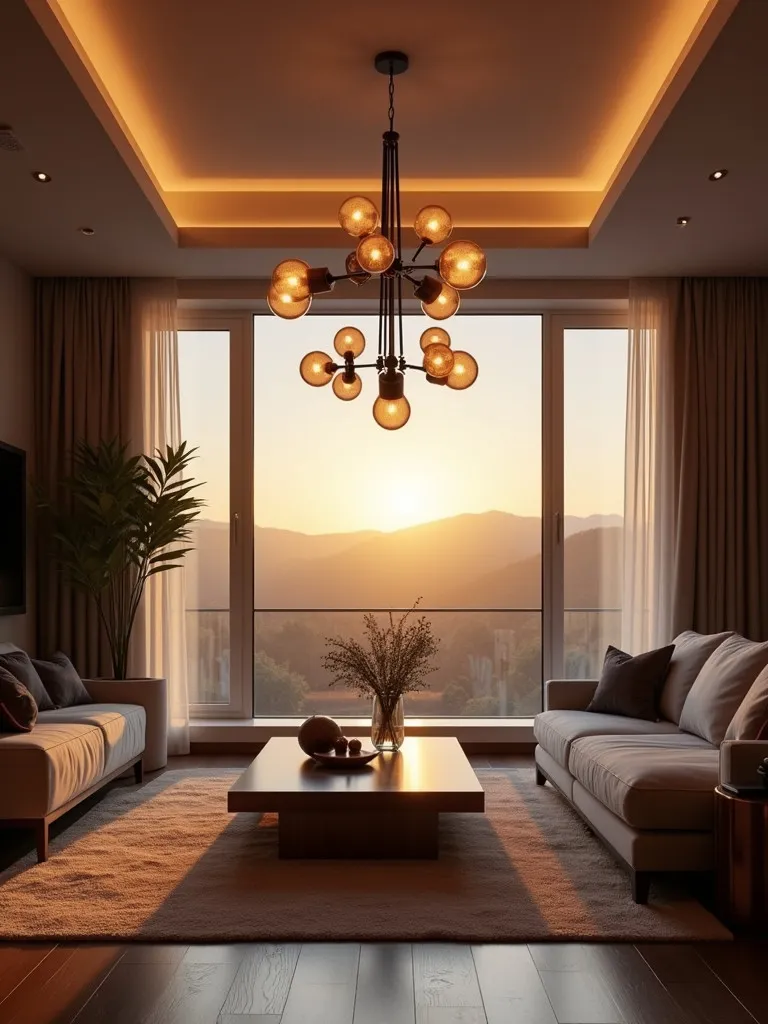
Warm vs Cool Light: Finding Your Perfect Balance
The color temperature of light is measured in Kelvin (K), ranging from warm yellows to cool blues. This spectrum mimics the natural progression of daylight, from the warm hues of sunrise to the cool tones of midday.
- Warm Light (2700K-3000K): This range produces a soft, yellowish-white light that creates a cozy and inviting atmosphere. It’s reminiscent of the gentle glow of candlelight or a crackling fireplace.
- Cool Light (3500K-5000K): These higher color temperatures result in a bright, energizing light that enhances focus and visibility. It’s similar to the crisp light of a sunny day.
Best for Relaxation: Creating Your Cozy Haven
For most living rooms, warm light in the 2700K-3000K range is ideal for creating a relaxing environment. This color temperature enhances the feeling of comfort and intimacy, perfect for unwinding after a long day or hosting a casual get-together with friends.

To elevate the relaxation potential of your living room lighting, consider incorporating dimmable bulbs. The ability to adjust light levels allows you to transition from brighter light for activities to softer illumination for relaxation.
Enhancing Room Ambiance: The Art of Layered Lighting
Creating the perfect ambiance in your living room involves more than just choosing the right color temperature. Layered lighting – the use of multiple light sources at different levels – can dramatically enhance the depth and functionality of your space.
Consider combining these elements:
- Ambient Lighting: This is your room’s general illumination, often provided by ceiling fixtures or recessed lights.
- Task Lighting: Focused lighting for specific activities, such as reading lamps or under-cabinet lights.
- Accent Lighting: Used to highlight architectural features or artwork, creating visual interest.

By combining these layers with different color temperatures, you can create a dynamic and versatile living space that adapts to various needs and moods throughout the day.
Cost Analysis
When considering living room light bulbs, it’s essential to look beyond the initial price tag and consider the long-term financial and environmental costs. Let’s break down the economics of lighting to help you make an informed decision that aligns with both your budget and your values.
Initial Purchase Price: The Upfront Investment
The initial cost of light bulbs can vary significantly depending on the type:
- LED Bulbs: These typically range from $10 to $30 per bulb, representing the highest upfront cost.
- Incandescent Bulbs: The most affordable initially, usually costing between $1 to $3 each.
- Fluorescent Bulbs (CFLs): These fall in the middle, priced around $5 to $15 per bulb.
At first glance, incandescent bulbs might seem like the most budget-friendly option. However, this perspective shifts dramatically when we consider the long-term implications of each choice.

Long-Term Savings: The Power of Efficiency
When we factor in energy consumption and bulb lifespan, the true cost of lighting becomes apparent:
- LED Bulbs: While more expensive upfront, LEDs use about 75% less energy than incandescent bulbs. Over 25,000 hours of use, the total cost (including purchase price and energy consumption) averages around $26.25 per bulb.
- Incandescent Bulbs: Despite their low initial cost, the frequent replacements and high energy consumption result in a total cost of approximately $171 over the same 25,000-hour period.
- Fluorescent Bulbs: Offering a middle ground, CFLs total about $40 over 25,000 hours of use.
These figures illustrate how the energy efficiency of LED bulbs translates into significant long-term savings, despite their higher upfront cost.
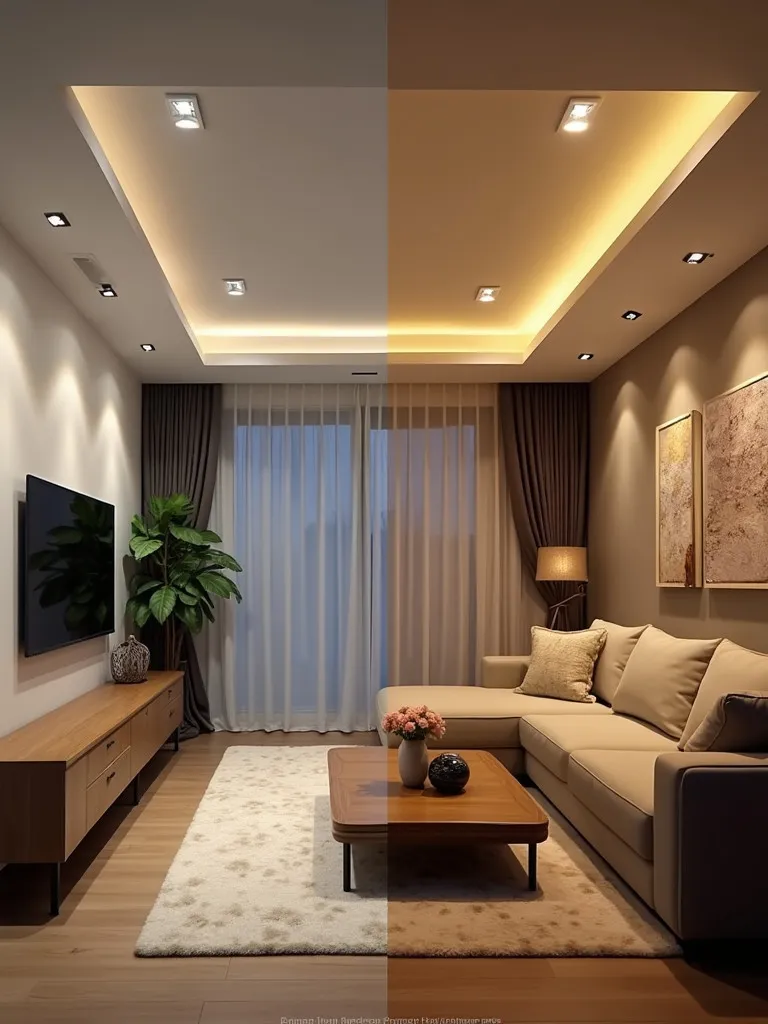
Maintenance Costs: The Hidden Expenses
Beyond energy and purchase costs, it’s important to consider the time and effort involved in maintaining your lighting:
- LED Bulbs: With their long lifespan, LEDs require minimal maintenance. You might go years without needing to replace a bulb, saving time and reducing the hassle of frequent changes.
- Incandescent Bulbs: Their short lifespan means more frequent replacements, which can be particularly inconvenient for hard-to-reach fixtures.
- Fluorescent Bulbs: While not as long-lasting as LEDs, they still offer a significant reduction in replacement frequency compared to incandescent.

Summary
As we conclude our illuminating journey through the world of living room light bulbs, let’s recap the key insights that will guide you in making the best choice for your space:
- Diverse Options: LED, incandescent, and fluorescent bulbs each offer unique benefits. LEDs excel in efficiency and longevity, incandescents provide warm, traditional light, and fluorescents offer a balance of brightness and moderate efficiency.
- Energy Efficiency Matters: LED bulbs stand out as the most energy-efficient option, using up to 80% less energy than incandescent. This efficiency translates to lower electricity bills and a reduced carbon footprint.
- Lifespan Considerations: The remarkable longevity of LED bulbs (up to 50,000 hours) far outpaces the shorter lifespans of incandescents (1,000-1,200 hours) and fluorescents (7,000-15,000 hours). Longer-lasting bulbs mean fewer replacements and less waste.
- Color Temperature Choices: The color temperature of your bulbs significantly impacts the ambiance of your living room. Warm tones (2700K-3000K) create a cozy atmosphere, while cooler tones (3500K-5000K) enhance focus and visibility.
- Cost Analysis: While LED bulbs have a higher upfront cost, their energy efficiency and long lifespan result in significant long-term savings. Incandescents are the cheapest initially but most expensive over time due to energy consumption and frequent replacements.
As you contemplate the perfect lighting solution for your living room, remember that the right choice balances aesthetics, functionality, and sustainability. Consider layering different types of lighting to create a versatile and inviting space that adapts to your various needs throughout the day.
